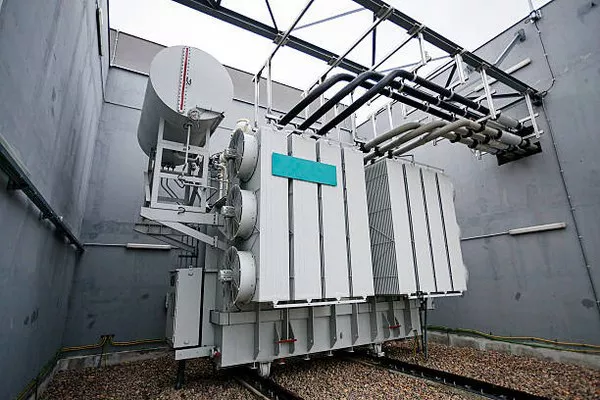In regions prone to power outages, having a generator capable of running essential appliances is vital for maintaining comfort and safety. Among these crucial appliances is the furnace, especially during cold seasons when maintaining a warm indoor environment is essential. However, selecting the appropriate generator wattage to power a furnace can be challenging, as it involves considerations such as the furnace type, power requirements, and efficiency. This article aims to provide guidance on determining the right generator wattage to run a furnace effectively and efficiently.
Understanding Furnace Power Requirements:
Before delving into generator wattage requirements, it’s essential to understand the power consumption of a typical furnace. Furnace power consumption varies depending on factors such as its size, efficiency rating, and fuel type. On average, a residential furnace consumes between 600 to 3000 watts during operation, with most falling within the 1000 to 1500-watt range.
Factors Affecting Generator Wattage Requirements:
Several factors influence the wattage requirements for powering a furnace with a generator. These factors include:
Furnace Type: Different types of furnaces have varying power demands. Common types include electric, gas, and oil furnaces. Electric furnaces typically have higher power requirements compared to gas or oil-powered ones.
Startup Surge: When a furnace initially starts, it often requires a higher surge of power before stabilizing to its normal operating wattage. This startup surge, known as the inrush current, should be accounted for when sizing a generator.
Efficiency: Modern furnaces are designed to be more energy-efficient, resulting in lower overall power consumption. However, older or less efficient models may draw more power to produce the same amount of heat.
Additional Loads: Consider other appliances or devices that may be connected to the generator simultaneously, as they contribute to the overall power demand. These could include lights, refrigerators, or essential electronic devices.
Calculating Generator Wattage:
To determine the appropriate generator wattage for powering a furnace, follow these steps:
Identify Furnace Wattage: Determine the wattage rating of your furnace. This information can usually be found on the furnace’s nameplate or in the manufacturer’s specifications.
Factor in Startup Surge: Multiply the furnace’s wattage by a startup surge factor to account for the initial surge in power when the furnace starts. A common surge factor for furnaces is 2 to 3 times the rated wattage.
Consider Additional Loads: If you plan to power other appliances simultaneously, calculate their combined wattage and add it to the furnace’s wattage and startup surge.
Select Generator Wattage: Choose a generator with a rated wattage that exceeds the total wattage calculated in the previous steps. It’s advisable to opt for a generator with a higher wattage capacity to accommodate unforeseen power demands or future appliance additions.
Example Calculation:
Let’s assume a gas furnace with a rated wattage of 1200 watts and a startup surge factor of 2. If you also plan to power a few additional appliances with a combined wattage of 800 watts, the total wattage requirement would be:
(1200 watts * 2) + 800 watts = 3200 watts
In this scenario, a generator with a rated wattage of at least 3200 watts would be necessary to power the furnace and other appliances simultaneously.
Choosing the Right Generator:
Once you’ve calculated the total wattage requirement, it’s time to select a generator that meets or exceeds this wattage. When choosing a generator, consider the following:
Rated Wattage: Ensure the generator’s rated wattage is sufficient to handle the total power demand, including the furnace and any additional loads.
Type of Generator: Generators come in various types, including portable, standby, and inverter generators. Consider factors such as portability, fuel type, and automatic startup capabilities based on your specific needs.
Fuel Efficiency: Opt for a generator with good fuel efficiency to minimize running costs, especially during prolonged outages.
Noise Level: If noise is a concern, choose a generator with lower decibel levels, especially if it will be used in residential areas.
Safety Considerations:
When operating a generator to power a furnace, observe the following safety precautions:
Proper Ventilation: Place the generator outdoors in a well-ventilated area to prevent carbon monoxide buildup. Never operate it indoors or in enclosed spaces.
Fuel Storage: Store fuel for the generator in approved containers in a safe location away from the generator and any ignition sources.
Regular Maintenance: Perform regular maintenance checks on the generator to ensure proper functioning and prevent accidents.
Use of Extension Cords: If using extension cords to connect appliances to the generator, ensure they are rated for outdoor use and capable of handling the load.
Conclusion:
Selecting the right generator wattage to power a furnace is crucial for ensuring comfort and safety during power outages. By considering factors such as furnace type, startup surge, and additional loads, you can accurately calculate the total wattage requirement and choose an appropriate generator. Prioritizing safety measures when operating a generator is essential to prevent accidents and ensure the well-being of occupants. With careful planning and consideration, you can confidently power your furnace with a generator and weather outages with ease.

